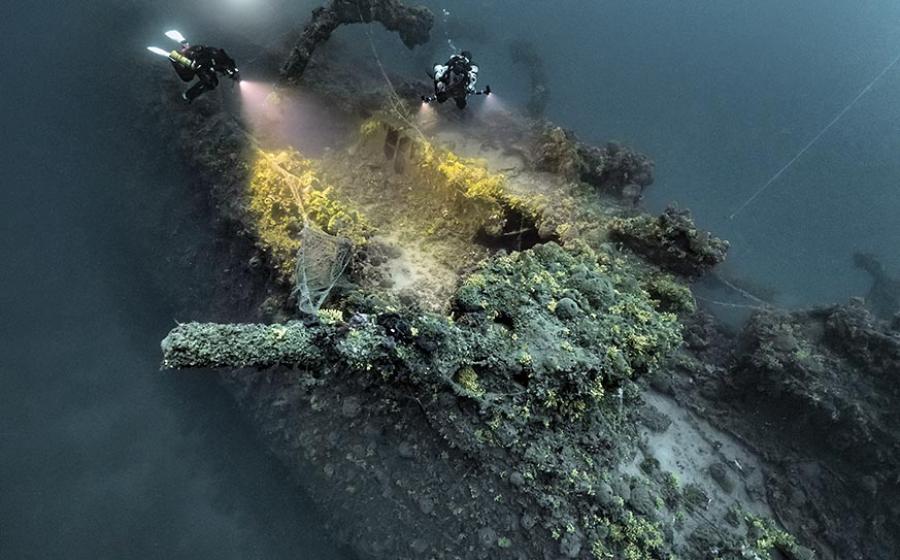A New Species of Fairy Wrasse [Critter Hunt]
Even before our skiff reaches the live-aboard anchored off the Indonesian island of Alor, I can see Anna’s excited grin. “Wait till you see what I’ve found,” she chirps as I clamber aboard. Minutes later, in the salon, video of an unfamiliar wrasse zips across the screen. “Have you ever seen this little guy?” she asks. “I’ve been through every book, and it’s not in any of them.”
Later, I follow Anna to the rubble-strewn slope, where a mixed aggregation of fairy and flasher wrasse is just beginning its frenzied afternoon spawning ritual. Right in the middle of the melee, two of Anna’s little fish race about, attempting to win the attention of females in the harem. When we reach port, Anna e-mails the image to fish experts Dr. Hiroyuki Tanaka in Japan and Dr. Gerry Allen in Australia. Within hours, she receives their harmonious verdict: a new species of fairy wrasse.
Armed with GPS coordinates and Anna’s site description, Dr. Allen and Dr. Mark Erdmann — working under the auspices of Conservation International — make a survey trip to Alor and capture specimens. The marine biologists graciously offered Anna species-naming right. In June 2012, the new wrasse bearing the name Cirrhilabrus humanni, in honor of our partner, marine life author and photographer Paul Humann, made its debut, along with 24 other new fish species, in Reef Fishes of the East Indies, a monumental three-volume reference by Allen and Erdmann.
Even before our skiff reaches the live-aboard anchored off the Indonesian island of Alor, I can see Anna’s excited grin. “Wait till you see what I’ve found,” she chirps as I clamber aboard. Minutes later, in the salon, video of an unfamiliar wrasse zips across the screen. “Have you ever seen this little guy?” she asks. “I’ve been through every book, and it’s not in any of them.”
Later, I follow Anna to the rubble-strewn slope, where a mixed aggregation of fairy and flasher wrasse is just beginning its frenzied afternoon spawning ritual. Right in the middle of the melee, two of Anna’s little fish race about, attempting to win the attention of females in the harem. When we reach port, Anna e-mails the image to fish experts Dr. Hiroyuki Tanaka in Japan and Dr. Gerry Allen in Australia. Within hours, she receives their harmonious verdict: a new species of fairy wrasse.
Armed with GPS coordinates and Anna’s site description, Dr. Allen and Dr. Mark Erdmann — working under the auspices of Conservation International — make a survey trip to Alor and capture specimens. The marine biologists graciously offered Anna species-naming right. In June 2012, the new wrasse bearing the name Cirrhilabrus humanni, in honor of our partner, marine life author and photographer Paul Humann, made its debut, along with 24 other new fish species, in Reef Fishes of the East Indies, a monumental three-volume reference by Allen and Erdmann.










